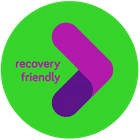Knowledge and awareness about commonly prescribed medications are crucial in addiction recovery. One such medication that requires careful consideration is generic Xanax. Xanax itself is a brand name for the drug alprazolam.
Classified as benzodiazepine, generic Xanax is primarily prescribed to individuals suffering from anxiety and panic disorders, though sometimes it is used as a short-term treatment for insomnia. It belongs to a class of medications that enhance the effects of a neurotransmitter called gamma-aminobutyric acid (GABA) in the brain, resulting in a calming and sedative effect.
A Xanax prescription is supposed to be for a limited number of weeks, and an extension requires reassessment and approval of a doctor. However, Xanax abuse has increased among teenagers and adults for self-medication and recreational reasons. At GateHouse Treatment, we always try to stay ahead of addiction trends to help our patients understand and defeat their addictions. This article will cover everything you need to know about generic Xanax, its effects, its dangers, and its growing popularity.
1. How Xanax Affects the Brain
At a molecular level, Xanax exerts its effects by enhancing the activity of a neurotransmitter called gamma-aminobutyric acid (GABA) in the brain. GABA is an inhibitory neurotransmitter that helps regulate brain activity and reduces anxiety while promoting relaxation.
After ingesting, Xanax binds to specific receptors in the brain known as GABA-A receptors. These receptors are located on the surface of neurons (brain cells) and consist of several subunits. Xanax binds to a specific site on the GABA-A receptor called the benzodiazepine binding site.
The body operates on electrical impulses. To move a limb, feel hunger, or have thoughts, a thousand little molecules interact and send messages back and forth. The binding of Xanax to this receptor makes it less likely to generate electrical impulses and transmit signals. Ultimately, this leads to a calming and soothing effect.
By enhancing the effects of GABA, Xanax reduces the excitability of certain brain regions, particularly those involved in anxiety and fear responses. Like alcohol, generic Xanax is a depressant, which slows down the body’s processes and creates fewer signals overall, making an anxiety response less likely.
2. Health Risks of Generic Xanax
When misused or taken without medical supervision, Xanax can lead to various physical, psychological, and social problems. Here are some key risks associated with Xanax addiction:
Physical Health Risks:
- Respiratory Depression: Xanax, especially when combined with other central nervous system depressants like alcohol or opioids, can cause respiratory depression. Its depressant effect means the lungs stop working and breathing stops, with oxygen deprivation leading to life-threatening situations, coma, and even death.
- Impaired Coordination: Xanax has sedative effects that can harm motor skills, limb awareness, and reaction times. This impairment increases the risk of accidents, falls, and injuries.
- Fatigue and Drowsiness: Excessive drowsiness and fatigue caused by Xanax abuse can leave individuals feeling constantly drained, making it difficult to fully engage in daily activities and enjoy life’s vibrant moments.
Mental and Emotional Risks:
- Cognitive Impairment: Prolonged Xanax abuse can cloud cognitive function, resulting in memory lapses, difficulties with attention and focus, and a haze that dulls the mind’s sharpness.
- Emotional Instability: Xanax abuse can disrupt emotional regulation and lead to emotional instability, mood swings, numbness, apathy, or detachment.
- Increased Anxiety: Paradoxically, relying on Xanax to manage anxiety over time can lead to a rebound effect, intensifying anxiety symptoms and potentially trapping individuals in a cycle of dependency.
Dependence:
- Physical Dependence and Tolerance: Regular use of Xanax can lead to physical dependence, where the body becomes reliant on the drug’s presence, leading to cravings and a need for higher doses to achieve the desired effects. Some subsequent dangers are doctor shopping, stealing from relatives and friends, or buying drugs on the street potentially laced with other substances. Sudden withdrawal can trigger a storm of withdrawal symptoms, including seizures, tremors, and anxiety rebound.
- Addiction: Xanax abuse can lead to psychological addiction, characterized by an intense craving for the drug and an inability to control its use. Addiction to Xanax can significantly impact all aspects of a person’s life and lead to a cycle of drug-seeking behaviors.
Overdose:
- Accidental Overdose: Taking higher doses of Xanax than prescribed may lead to accidental overdose. Symptoms may include severe sedation, confusion, respiratory distress, and, in extreme cases, coma or death.
- Cross-drug Abuse: The biggest risk of Xanax comes when combined with other depressants, such as opioids and alcohol. Since Xanax is popular for recreational use, its combination with drinking is common. This mixture significantly increases the risk of overdose, as these depressants potentiate each other’s effects.
3. The Growing Popularity of Generic Xanax
In 2008, Heath Ledger, best known for his role as the Joker in “The Dark Knight,” died from a cross-drug overdose that included Xanax. In 2017, the rapper Lil Peep died from a combination of generic Xanax and fentanyl. In 2019, musician Billie Eilish’s song “xanny,” slang for Xanax, reached number 35 on the U.S. billboard.
The song deals with Xanax abuse, with lyrics like:
“Waking up at sundown
They’re late to every party
Nobody’s ever sorry
Too inebriated now to dance”
It’s clear and reflected in our popular culture that Xanax abuse is increasing. Benzo prescriptions in the U.S. have shown a steady uptick over decades, with the anxiety generated by the Covid-19 pandemic causing a significant increase in the prescription of generic Xanax. As the drug becomes more recreationally available, it’s important to look for signs of Xanax abuse in your loved ones.
The most common look for Xanax is as a white rectangular tablet with lines running across it. These are sometimes called Xanax “bars.” They can also appear in oval or triangular shapes at lower doses. Xanax can be taken as a pill, or it can be crushed and snorted. If your loved one has struggled with Xanax and is displaying noticeable mood swings, memory problems or slurred speech, they may be abusing Xanax.
It’s important to approach your loved one with compassion, empathy, and non-judgmental support if you suspect they may be addicted. Whatever your needs might be, we are here to help.
GateHouse Treatment and Xanax Abuse
At GateHouse Treatment, we are wellness experts who can help you or your loved one get your life back on track, no matter the challenges. With a focus on Cognitive Behavior Therapy (CBT), we can help treat not just the symptoms of addiction but the underlying problems that lead to it. We also offer outpatient, intensive outpatient, and partial hospitalization programs, besides more innovative methods like adventure and biofeedback therapy. If you need a relaxing place to unwind, we partner with quality sober homes that let you recover peacefully.
To begin your path to sobriety, call (855) 448-3588 for a free consultation or contact us through our website. We’d love to hear about you and figure out how to make a change together.
- Cymbalta Withdrawal: Causes, Symptoms, And Management - October 12, 2023
- Boredom in Recovery: 5 Tips to Avoid Relapse - October 6, 2023
- Overconfidence and Rehab: Avoiding Relapse - October 4, 2023




